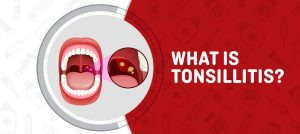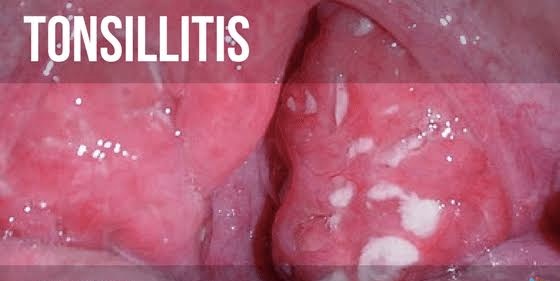As I lay in bed, my throat on fire, I knew I was in for the fight of my life. Tonsillitis had taken hold, and it seemed determined to suffocate me. Every breath was a battle, every swallow a tiny victory. I felt like I was drowning, my airway constricting with each passing moment. But I refused to give up. I thought of all the days I’d taken my breath for granted, all the moments I’d wasted on trivial things. I knew I had to keep fighting, for every precious breath was a gift.
With each passing day, the battle raged on. My body ached, my fever soared, but my spirit remained unbroken. I sipped on warm tea, feeling the soothing liquid ease my pain. I inhaled the steam, letting it fill my lungs with life. And with each small victory, my hope grew. I began to envision a future free from the grip of tonsillitis, a future where every breath was easy and effortless. I saw myself running through fields, laughing with friends, living life to the fullest. And with that vision, my determination grew.
As I slowly began to recover, I realized that the battle for breath had taught me a valuable lesson. Every moment, every breath, is precious. We must cherish them, fight for them, and never take them for granted. And so, I emerged from the battle scarred but stronger, my appreciation for life renewed. I took a deep breath, feeling the cool air fill my lungs, and smiled. The battle for breath had been won, and I was ready to face whatever came next, armed with hope, determination, and a newfound love for life.
What is Tonsillitis?

Tonsillitis is inflammation of the tonsils, which are two oval-shaped lymphoid organs located on either side of the back of the throat. Tonsillitis occurs when the tonsils become infected, typically by a viral or bacterial pathogen.
Types
1. Acute Tonsillitis: A sudden and short-term infection, usually lasting for a few days to a week.
2. Chronic Tonsillitis: A long-term infection that persists over time, often lasting for months or even years.
3. Recurrent Tonsillitis: Repeated episodes of acute tonsillitis, occurring several times a year.
4. Peritonsillar Abscess: A collection of pus around the tonsils, often requiring surgical drainage.
5. Cryptic Tonsillitis: Inflammation of the crevices (crypts) on the surface of the tonsils.
6. Necrotizing Tonsillitis: A rare and severe form of tonsillitis, characterized by tissue death and ulceration.
7. Mononucleosis Tonsillitis: Tonsillitis caused by the Epstein-Barr virus, often accompanied by fatigue, fever, and swollen lymph nodes.
8. Bacterial Tonsillitis: Tonsillitis caused by bacterial infections, such as Streptococcus pyogenes (group A beta-hemolytic streptococcus).
9. Viral Tonsillitis: Tonsillitis caused by viral infections, such as the common cold or influenza.
Pathophysiology
– Infection of the tonsils by bacteria or viruses
– Activation of immune cells and release of chemical mediators
– Increased blood flow and swelling of the tonsils
– Tissue damage and necrosis (in severe cases)
– Formation of a peritonsillar abscess (in some cases)
– Systemic symptoms such as fever, headache, and fatigue
Tonsillitis can be transmitted through:
1. Close contact: Direct contact with an infected person, such as touching, kissing, or sharing food and drinks.
2. Airborne transmission: Inhaling airborne droplets containing the virus or bacteria, such as when an infected person talks, coughs, or sneezes.
3. Contaminated surfaces: Touching surfaces or objects contaminated with the virus or bacteria, such as doorknobs, utensils, or toys.
4. Infected saliva: Sharing food, drinks, or personal items, like toothbrushes or lip balm, with an infected person.
5. Droplet transmission: Through respiratory droplets that land on surfaces or are inhaled.
The mode of transmission depends on the specific cause of tonsillitis, whether viral or bacterial.
Causes
– Viral tonsillitis: Tonsillitis can be caused by various viruses, including adenoviruses, influenza virus, Epstein-Barr virus, parainfluenza viruses, enteroviruses, herpes simplex virus and human immunodeficiency virus (HIV). This form of tonsillitis is less severe, and antibiotics are not prescribed.
– Bacterial tonsillitis: Streptococcus (strep) bacteria can cause tonsillitis, which can also lead to strep throat. Staphylococcus aureus can also cause inflammation of the tonsils. These bacterial infections can be treated with antibiotics.
Risk Factors
– Age: Tonsillitis is more common in children, and bacterial tonsillitis is most prevalent in children aged 5 to 15.
– Frequent exposure: School-age children are more likely to get tonsillitis due to their close contact with their peers and frequent exposure to viruses or bacteria that cause tonsillitis.
The signs and symptoms of tonsillitis may include:
1. Sore throat
2. Swollen and tender tonsils
3. White or yellow patches on the tonsils
4. Difficulty swallowing (dysphagia)
5. Fever
6. Headache
7. Ear pain (referred pain)
8. Swollen lymph nodes in the neck
9. General feeling of illness (malaise)
10. Loss of appetite
11. Difficulty opening the mouth (trismus)
12. Tender and swollen jaw
13. Bad breath (halitosis)
14. Drooling (in children)
15. Muscle aches and pains
In severe cases, tonsillitis can lead to:
1. Peritonsillar abscess (a collection of pus around the tonsils)
2. Tonsillar hypertrophy (enlargement of the tonsils)
3. Obstructive sleep apnea (OSA)
4. Respiratory distress
Prevention
1. Practice good hygiene:
– Wash your hands frequently, especially after contact with an infected person.
– Avoid sharing food, drinks, or personal items.
2. Avoid close contact with someone who has tonsillitis.
3. Keep surfaces clean:
– Regularly disinfect surfaces and objects that may be contaminated.
4. Boost your immune system:
– Get enough sleep.
– Stay physically active.
– Eat a balanced diet rich in fruits, vegetables, and whole grains.
5. Avoid irritants:
– Stay away from smoke and pollution.
6. Stay hydrated:
– Drink plenty of water to help keep your throat moist.
7. Consider immunization:
– Get vaccinated against strep throat, if recommended by your doctor.
8. Practice good oral hygiene:
– Brush your teeth regularly.
– Gargle with salt water to help reduce inflammation.
9. Avoid sharing personal items:
– Use separate towels, utensils, and drinking glasses.
10. Consider tonsillectomy:
– If you have recurring tonsillitis, surgery may be an option.
Complications
– Obstructive sleep apnea: This is a condition in which a person experiences disrupted breathing while sleeping due to the inflammation or swelling of the tonsils.
– Tonsillar cellulitis: This occurs when the infection from tonsillitis spreads to the surrounding tissue.
– Peritonsillar abscess: This is a condition in which a collection of pus forms behind a tonsil, causing the tonsil to push inwards.
– Rheumatic fever: This is a rare complication of tonsillitis that can cause inflammation in the joints, heart, nervous system and skin.
– Poststreptococcal glomerulonephritis: This is a condition in which the infection causes inflammation of the kidney.
– Scarlet fever: This is a streptococcal infection characterized by a prominent rash.
– Post-streptococcal reactive arthritis: This is a condition in which the joints become inflamed.
– Toxic shock syndrome: This is a rare but serious condition in which there is a loss of blood pressure and organ failure.
– Ear infections and sinusitis: The infection from tonsillitis can spread through the Eustachian tube and cause ear infections or through the back of the nose and cause sinus infections.
– Meningitis and brain abscess: In rare cases, the infection from tonsillitis can spread to the lining of the brain and cause meningitis or cause collections of pus in the brain.
– Lemierre’s syndrome: This occurs when the infection from tonsillitis spreads to the jugular vein, causing both inflammation of the jugular vein and the formation of a blood clot.
– Necrotizing fasciitis: This is an aggressive infection that causes death of soft tissue.
Diagnostic Investigation
1. Physical examination: Visual inspection of the tonsils and surrounding tissues.
2. Medical history: Questions about symptoms, duration, and previous illnesses.
3. Throat swab: Collecting a sample from the tonsils to test for bacterial or viral infections.
4. Rapid strep test (RST): A quick test to detect streptococcal infections.
5. Complete Blood Count (CBC): To check for signs of infection or inflammation.
6. Blood culture: To identify the presence of bacteria in the bloodstream.
7. Imaging studies:
– X-ray: To rule out other conditions like abscesses or obstruction.
– Computed Tomography (CT) scan: To visualize the tonsils and surrounding tissues.
8. Tonsillar biopsy: Removing a tissue sample for histopathological examination (rarely done).
9. Allergy testing: To determine if allergies are contributing to tonsillitis.
10. Sleep study: To evaluate sleep patterns and detect potential sleep disorders.
These investigations help healthcare professionals diagnose tonsillitis, determine its cause, and develop an appropriate treatment plan.
Treatment and Management
1. Antibiotics for bacterial tonsillitis
2. Pain relief medications like acetaminophen or ibuprofen
3. Rest and relaxation
4. Adequate fluid intake
5. Warm liquids like tea or broth
6. Cold liquids like ice water or popsicles
7. Gargling with salt water
8. Humidified oxygen
9. Nasal airway device
10. Intravenous corticosteroids
11. Tonsillectomy (surgical removal of tonsils)
12. Adenoidectomy (surgical removal of adenoids)
13. IV hydration
14. Oral antibiotics
15. Oral pain medication
16. Throat lozenges
17. Sprays or gargles containing phenol or menthol
18. Anti-inflammatory medications like corticosteroids
19. Breathing exercises to improve airflow
20. Follow-up appointments with a healthcare provider
Note: The treatment plan should be individualized based on the severity and cause of tonsillitis, as well as the patient’s overall health and medical history. Consult a healthcare professional for proper diagnosis and treatment.

